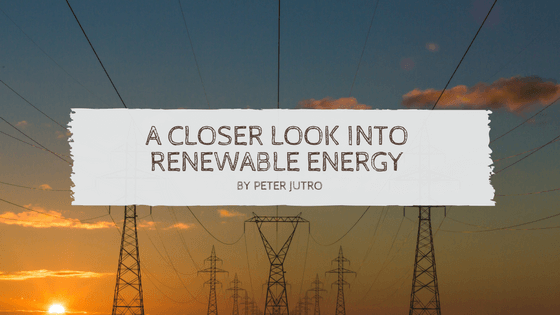Not long ago, efforts to install alternative energy sources were stifled by high costs and low returns. Today’s energy landscape tells a different story. Renewable technologies have improved markedly and are more affordable than ever before. Alternative energy sources have matured from an environmentalist’s pipedream into one of the nation’s fastest-growing industries. Last year, 15% of American electricity was generated from hydro, solar, wind and other renewable sources, and that figure will only rise as the technology moves further into the mainstream.
For those unfamiliar with the relatively nascent technologies that have stepped up to solve the sustainability crisis caused by fossil fuels, here is a brief summary of the state of today’s most widely used renewable energy resources.
Wind
Wind power uses turbines to capture energy in response to air flow. The process involves no greenhouse gas generation, requires no water and only a small amount of land. Electricity is generated by many individual turbines connected to the power network. Wind turbines were responsible for about 4% of global energy production throughout 2015. During the same year in Europe, the US, and Canada, wind power was the number one source of new energy. So far 83 countries have incorporated wind into their commercial power supply, with over 200,000 wind turbines currently operating worldwide.
Hydro
Waterwheels have applied kinetic energy to assist with milling and irrigation since 400 B.C., and modem hydropower bears a fundamental resemblance to its predecessors. Today’s hydro plants capture the kinetic force of water and transforms it into electricity. Traditionally, hydropower was generated from large dams and reservoirs–such as Hoover Dam–but smaller plants that have less of an environmental impact are also common today. In 2015, hydroelectricity was responsible for 16.6% of the world’s total electricity output, and 70% of all renewable energy.
Solar
Almost one and a half centuries of experimentation have allowed us to develop means to convert the massive amount of radiant heat and light released by the sun into a source of renewable power on Earth. Systems that harness the sun’s rays into consumable electricity are known as active solar, and include photovoltaics, solar water heating, and concentrated solar power (CSP). Solar sources generated 1.3% of the world’s power in 2016, however they are predicted to become the world’s main source of electricity by 2050.
Geothermal
Deep in the planet’s core, a colossal reservoir of energy sits largely untapped. Heat entrapped since the planet’s formation, as well as radioactive decay push a constant flow of thermal energy close to the surface. Geothermal power plants channel the heat of the earth’s core to boil water. The resulting steam is passed forcefully through turbines, turning them to produce power. Geothermal electricity currently sees use in 24 countries, a handful of which rely on geothermal for over 15% of their power. These include Iceland (30%), the Philippines (27%) and Kenya (51%). The Geothermal Energy Association estimates that as of 2015, only 6.5% of the worldwide energy potential of geothermal has been tapped.
Biomass
With cutting-edge renewable technologies grow more prevalent every day, it’s easy to overlook biologically-based sources of sustainable energy. Biomass, or biological material–can produce energy directly via combustion. Many forms of biomass can also be converted into biofuels, such as those based on alcohol or various natural oils. When organic waste that would otherwise go into landfills is burned, there is still an environmental advantage over burning fossil fuels. At one time, burning biomass accounted for 90% of the US energy supply, however times have changed, and by 2016, organic material combustion comprised only 5% of US primary energy use.
As long as benign, renewable power sources continue to grow in practicality, a global energy grid released from reliance on fossil fuel remains a strong possibility.

